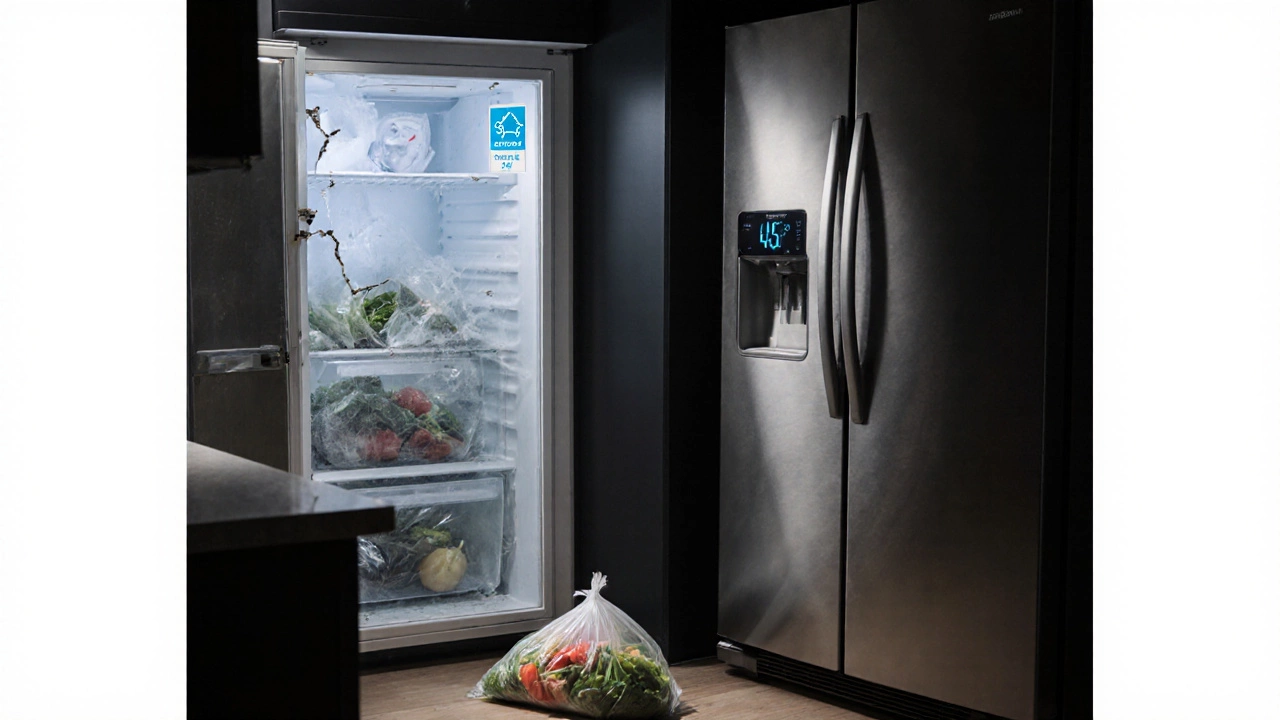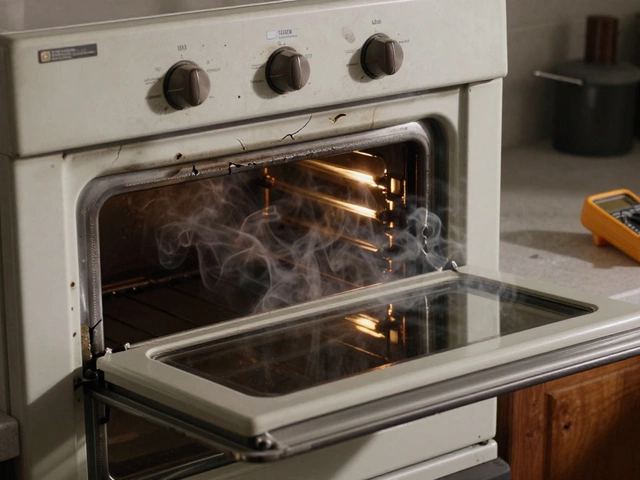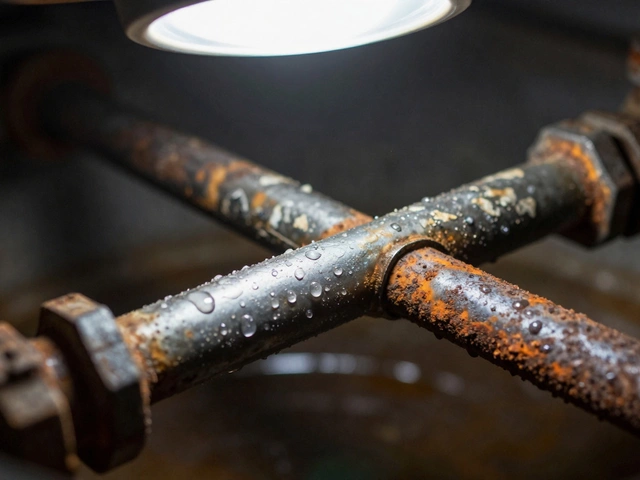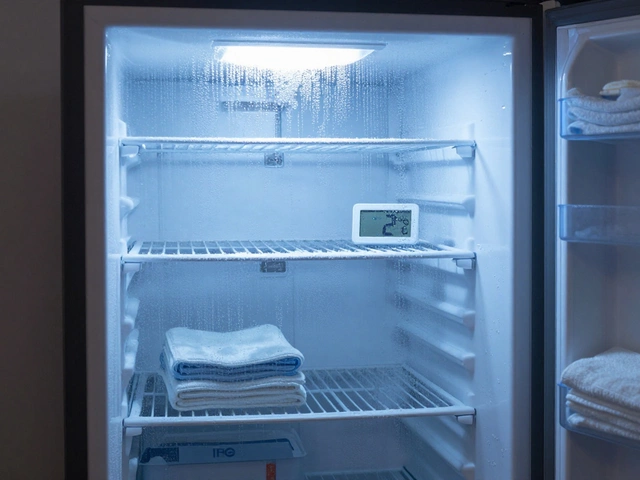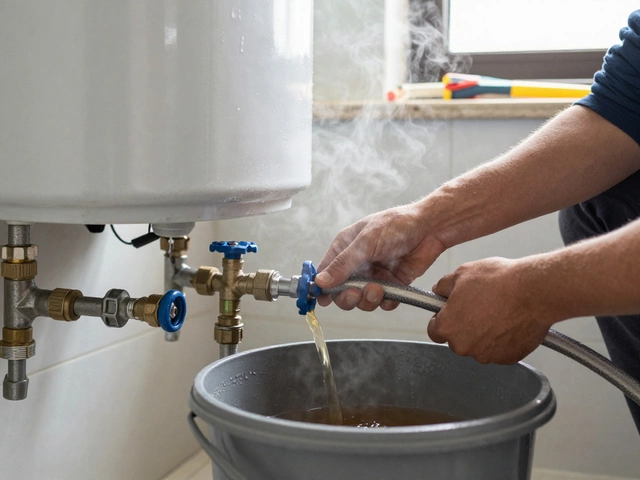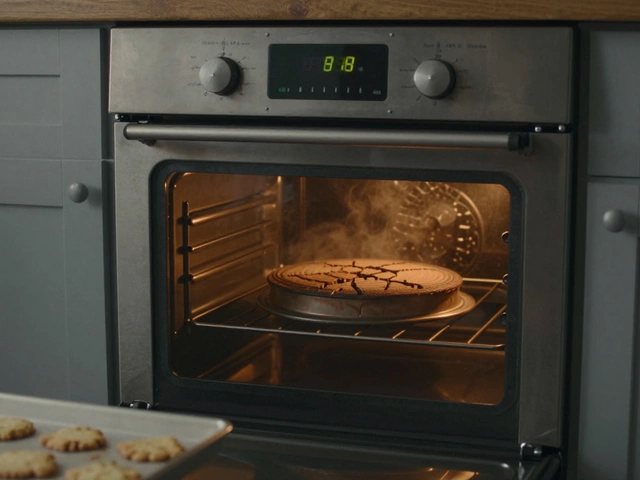When your freezer stops cooling, you’re not just losing ice cubes-you’re risking spoiled food, wasted money, and a messy kitchen. The big question isn’t just freezer repair or replace-it’s which option actually puts more cash back in your pocket. The answer isn’t as simple as "it’s old, so replace it." There’s a smarter way to decide, and it starts with knowing what’s broken, how old the unit is, and what you’re really paying for.
How old is your freezer?
Age is the first thing that tells you if repair makes sense. Most freezers last between 12 and 20 years. If yours is under 8 years old and still under warranty, repair is almost always the right move. Even if the warranty expired, a unit under 10 years old usually has plenty of life left. But if it’s 15 years or older, you’re in gray territory. Older freezers use more power, don’t seal as well, and parts are harder to find. In New Zealand, where electricity costs are rising, a 15-year-old freezer could be costing you $150-$250 extra a year in power bills compared to a modern Energy Star-rated model.
What’s broken?
Not all freezer problems are equal. Some fixes are cheap and fast. Others are expensive and temporary. Here’s what you’re likely dealing with:
- Thermostat failure - $80-$150 to replace. Common in units 5-12 years old. Easy fix.
- Condenser fan motor - $120-$200. Causes uneven cooling. Often fixable if the compressor is healthy.
- Door seal (gasket) - $40-$80. If cold air is leaking out, this is the cheapest fix you can make. Test it by closing a dollar bill in the door-if you can pull it out easily, the seal is gone.
- Compressor failure - $500-$900. This is the heart of the freezer. If it’s dead, you’re looking at a repair cost that’s often 60-80% of a new unit’s price.
- Refrigerant leak - $300-$700. If the system lost coolant, fixing it means finding the leak, repairing it, and recharging. But if the system is old, the leak might come back. Many technicians won’t even try on units over 10 years old.
Fixing a seal or thermostat? Worth it. Replacing a compressor? Think twice.
Cost comparison: Repair vs. New
Let’s say your freezer is 12 years old and the compressor has gone. You get two quotes:
- Repair: $750 (parts + labor)
- New unit: $1,100 (mid-range 18-cubic-foot frost-free freezer)
At first glance, repair looks better. But here’s the catch: the new freezer uses 40% less energy. Your old unit probably pulls 450-600 kWh per year. A new one? Around 250-300 kWh. At $0.30 per kWh (current Wellington average), that’s $135 saved a year on electricity. In under three years, you’ve recovered the $350 price difference. And that’s not counting the peace of mind, better temperature control, and quieter operation.
Now, if you’re looking at a $200 repair for a 6-year-old freezer? That’s a no-brainer. You’re getting five more years of reliable use for less than the cost of a new ice tray.
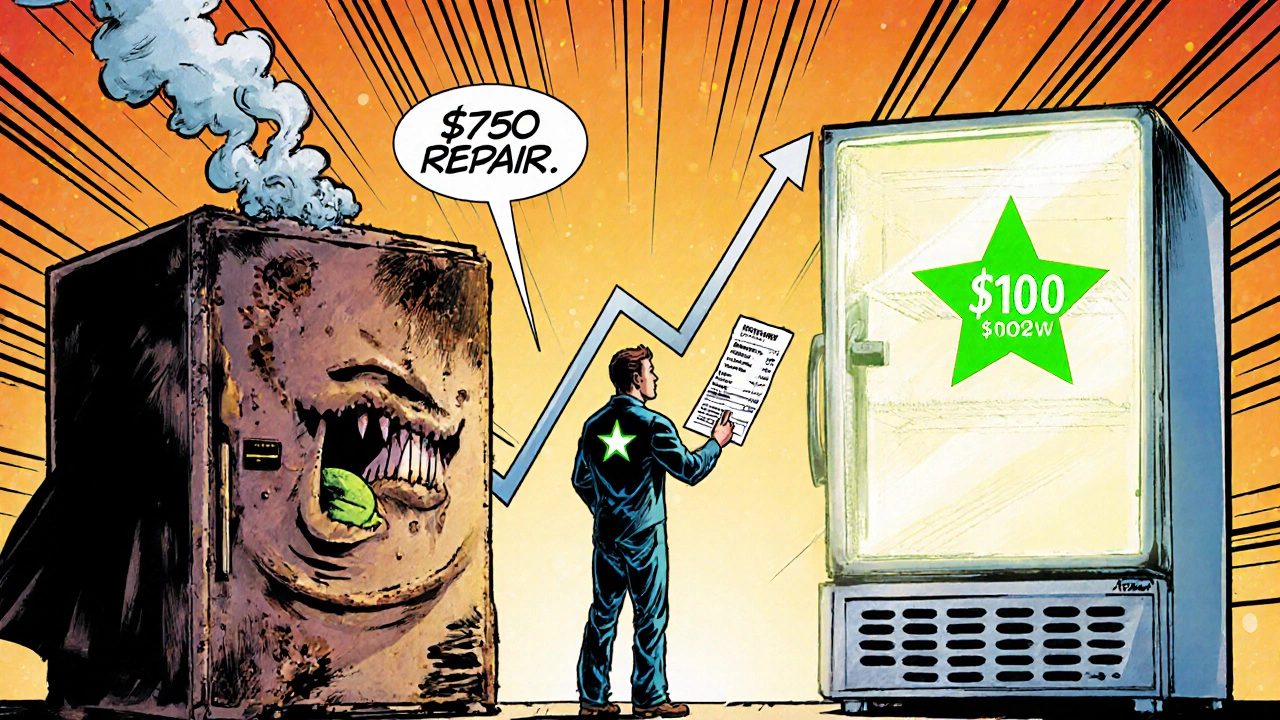
Hidden costs of repair
Repair isn’t just about the invoice. There are other things you might not think about:
- Labour delays - If parts need ordering, you might wait two weeks. Food spoils fast. A $500 food loss wipes out any savings.
- Short-term fixes - A patched refrigerant leak might last six months. Then you’re back to square one.
- Warranty - Repairs usually come with a 30-90 day guarantee. New freezers? At least one year, often two. Some brands offer five-year compressor warranties.
- Space and efficiency - Modern freezers are slimmer, smarter, and quieter. You might get more storage in a smaller footprint. If you’re upgrading from a chest freezer to a frost-free upright, you’ll save hours defrosting.
When to replace, even if repair seems cheap
Here are five clear signs you should skip repair and buy new:
- Your freezer is over 15 years old.
- You’ve repaired it twice in the last two years.
- The repair quote is more than 50% of a new unit’s price.
- Your power bill has jumped noticeably in the last year.
- You’re using a manual-defrost model. Frost-free is now standard for a reason.
Also, if you’re planning to sell your home, a modern, energy-efficient freezer adds subtle value. Buyers notice these things-even if they don’t say anything.
What to look for in a new freezer
Not all freezers are created equal. Here’s what actually matters:
- Energy rating - Look for the highest star rating (5 stars in NZ). Avoid anything below 3 stars.
- Capacity - Measure your space and estimate your needs. A family of four usually needs 15-20 cubic feet.
- Defrost type - Frost-free is worth the extra $100-$200. Manual defrost is a chore you’ll hate after a year.
- Temperature alarm - A simple alert if the door’s left open or the power goes out. Worth having.
- Brand reliability - Brands like Liebherr, Samsung, and Fisher & Paykel consistently rank high in NZ consumer reports. Avoid no-name brands from discount stores.
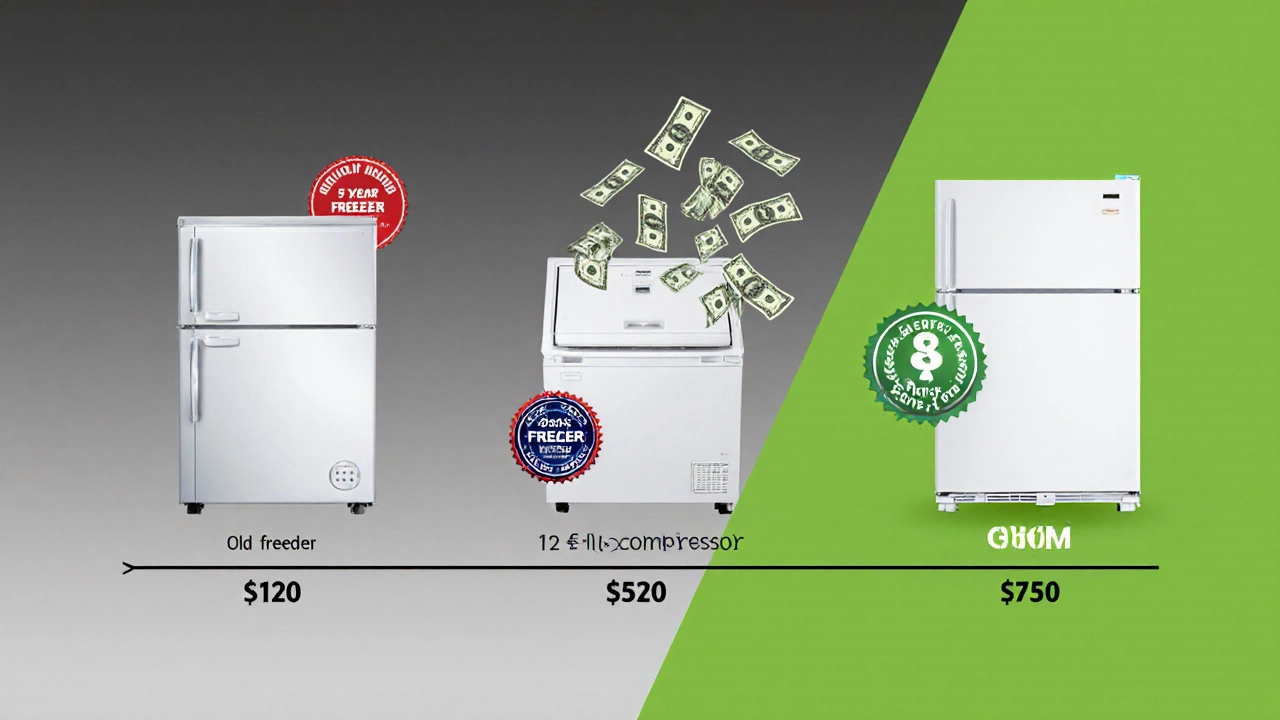
What to do with your old freezer
Don’t just leave it on the curb. In Wellington, you can take it to a certified e-waste recycler like Recycle My Appliance or Waste Management. Many retailers offer free removal when you buy a new one. Some even give you $50-$100 off for trading in your old unit. Check with your local council-they often have seasonal appliance recycling events with free drop-off.
Final decision checklist
Use this quick guide the next time your freezer acts up:
- Is it under 10 years old? → Repair if cost is under $400
- Is it 10-15 years old? → Repair only if it’s a simple fix (seal, fan, thermostat)
- Is it over 15 years old? → Replace, no exceptions
- Is the repair quote over 50% of a new unit? → Replace
- Are you paying more than $200/year extra in electricity? → Replace
- Did you just lose $300 worth of food? → Replace
There’s no shame in replacing a freezer. It’s not giving up-it’s investing in your time, your food, and your wallet. A new freezer pays for itself in less than three years. And after that? It’s pure savings.
How long should a freezer last before needing replacement?
Most freezers last between 12 and 20 years with normal use. Chest freezers tend to last longer-up to 20+ years-because they have fewer moving parts. Upright freezers usually last 12-15 years. If your freezer is older than 15 years and starting to have problems, replacement is usually the smarter choice, even if repair seems cheaper upfront.
Can I fix a freezer leak myself?
You can replace the door gasket yourself-it’s just a matter of pulling out the old seal and snapping in the new one. But if you’re dealing with a refrigerant leak, don’t attempt it. Refrigerant is hazardous, requires special tools, and is regulated by law in New Zealand. Only licensed technicians can handle refrigerant systems. Trying to fix it yourself could lead to fines or further damage.
Is it worth repairing a freezer that’s 10 years old?
It depends on the problem. If it’s a thermostat, fan motor, or door seal, yes-repair is cost-effective. But if the compressor is failing, you’re spending $600-$800 on a unit that’s already halfway through its life. At that point, the new freezer’s energy savings and reliability make replacement the better long-term choice.
How much does it cost to run a freezer per year?
An older freezer (15+ years) can use 500-700 kWh per year, costing $150-$210 at current Wellington rates. A new Energy Star-rated freezer uses 250-300 kWh per year, costing $75-$90. That’s $75-$120 saved annually just on electricity. Over five years, that’s $375-$600 in savings-more than enough to cover the price difference on a new unit.
Should I buy a chest or upright freezer?
Chest freezers are more energy-efficient and better for long-term storage-they lose less cold air when opened. But they take up more floor space and are harder to organize. Upright freezers are easier to access and fit better in most kitchens, but they use 10-15% more power. If you’re storing bulk food (like meat from a farm share), go chest. If you’re just keeping a few frozen meals, an upright is fine.
Next steps if your freezer’s broken
Here’s what to do right now:
- Check the door seal. If it’s cracked or doesn’t stick, replace it ($50). You might not need anything else.
- Unplug the freezer and wait 10 minutes. Plug it back in. Sometimes a reset fixes a glitchy thermostat.
- If it’s still not cooling, call a technician. Ask for a diagnostic fee upfront-some charge $80-$120 just to look. Make sure they’ll apply it to the repair cost if you go ahead.
- Ask for a written quote for repair vs. a new unit. Don’t accept verbal estimates.
- If you decide to replace, check for council rebates or retailer trade-in deals. You might get $100 off just for recycling your old one.
Don’t wait until your food spoils. Act early, and you’ll save more than money-you’ll save time, stress, and a whole lot of wasted groceries.

